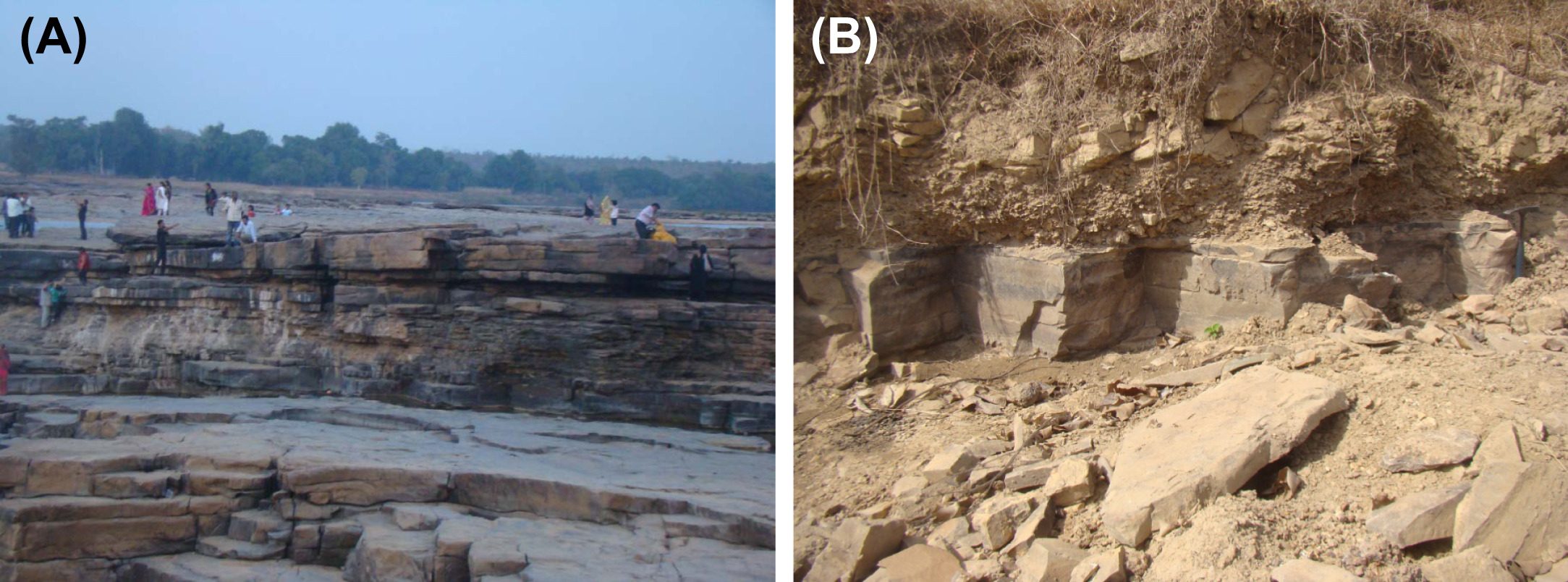Indravati Gr
Type Locality and Naming
Named after Indravati Basin. Dutt (1963) proposed the name Indravati series and subdivided the succession into three mappable units of stage status, namely, Tiratgarh, Kanger, and Jagdalpur, which were correlatable with the Chattisgarh succession. Schnitzer (1969) established four carbonateeshale cycles in the Kanger and Jagdalpur stages and separated them from the Tiratgarh by a disconformity. Ramakrishnan (1987) formally divided the succession into four mappable units namely Tiratgarh Fm, Cherakur Fm, Kanger Fm, and Jagdalpur Fm making up the Indravati Group.
Lithology and Thickness
A lower Tirathgarh Fm sandstone, then Cherakur Fm siltstone, Kanger Fm limestone and Jagadalpur Fm marl. The ca.500-m-thick basin filling succession preserves thick succession of shallow coastal sediments, mainly represented by flat lying laterally persistent well sorted glauconitic sandstone beds (Fig. – image A) which passes up to thick shalee limestone unit with a transitional contact.
[Figure: Indravati basin field photographs illustrating lithology and sedimentary structures in different formations. (A) Tiratgarh Fm (Chitrakot Sandstone Member) - laterally persistent wavy bedded mature quartz arenite. (B) Jagadalpur Fm - Birsaguda tuff. (from Saha et al., 2016)]
.
Relationships and Distribution
Lower contact
Major unconformity on basement of granite gneiss and greenstone belt
Upper contact
Not given
Regional extent
Indravati basin has a tectonic contact with the EGB along the eastern margin. The eastern part of the succession thus developed tight folds and axial plane cleavage while the rest of the basin remains undeformed. The Indravati succession might correlate with the Chattisgarh succession with a connection through the outliers of Ampani, Keshkal, and Khariar basin.
GeoJSON
Fossils
Age
Depositional setting
Basin-filling succession of shallow-coastal sediments.
Additional Information
